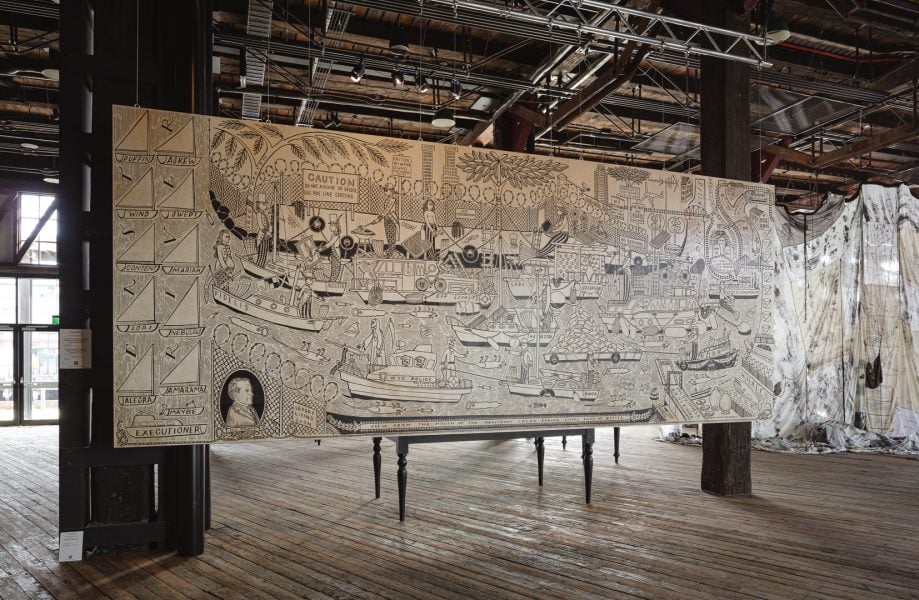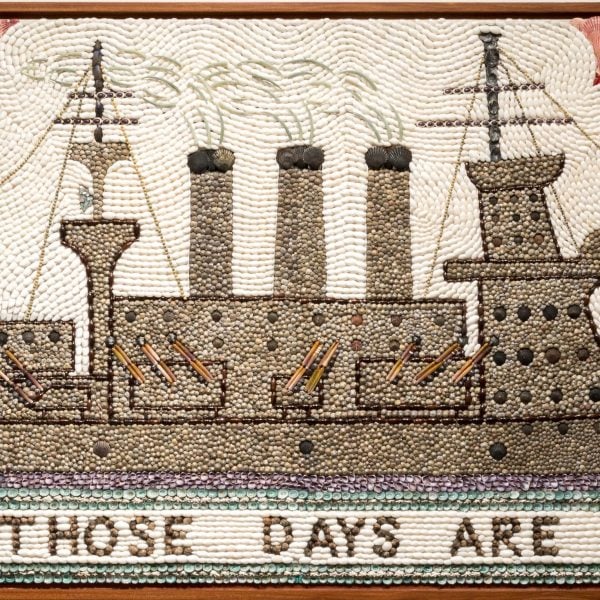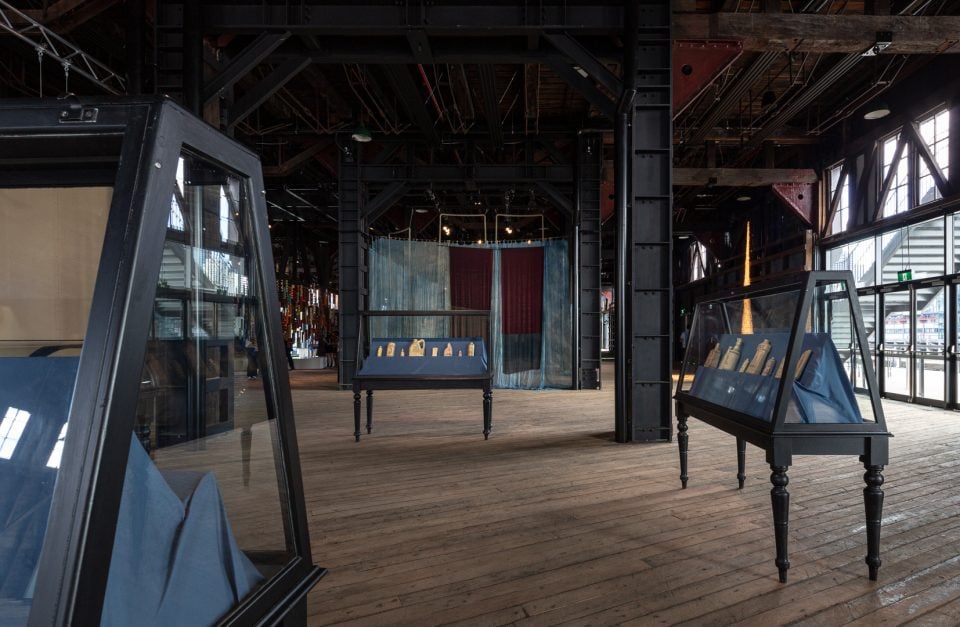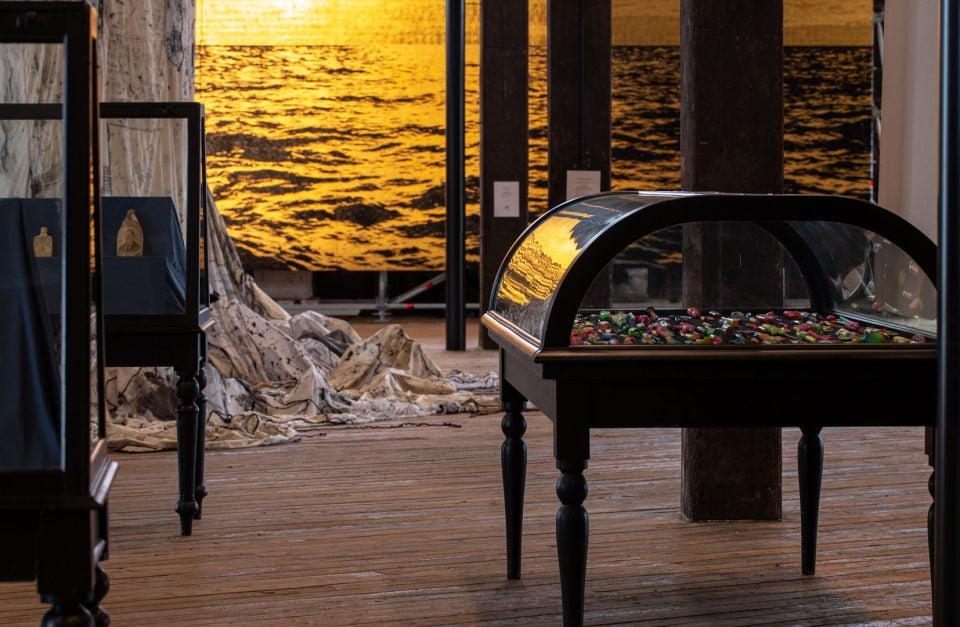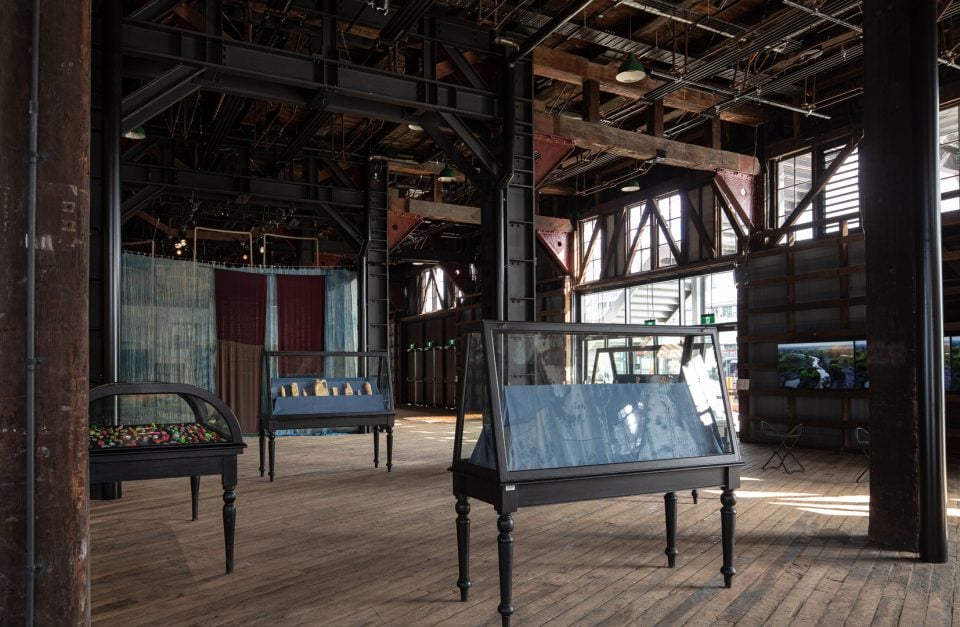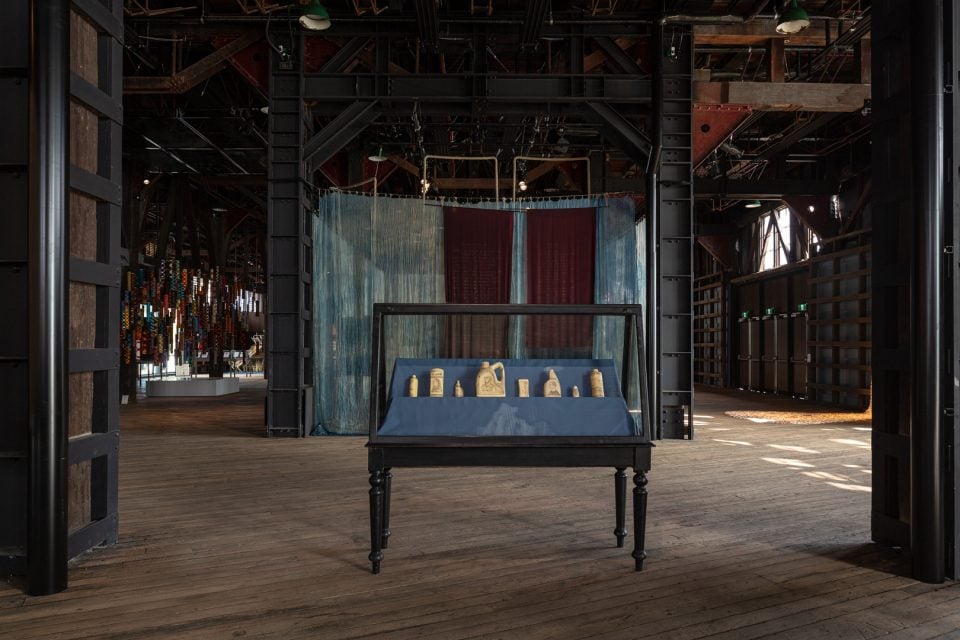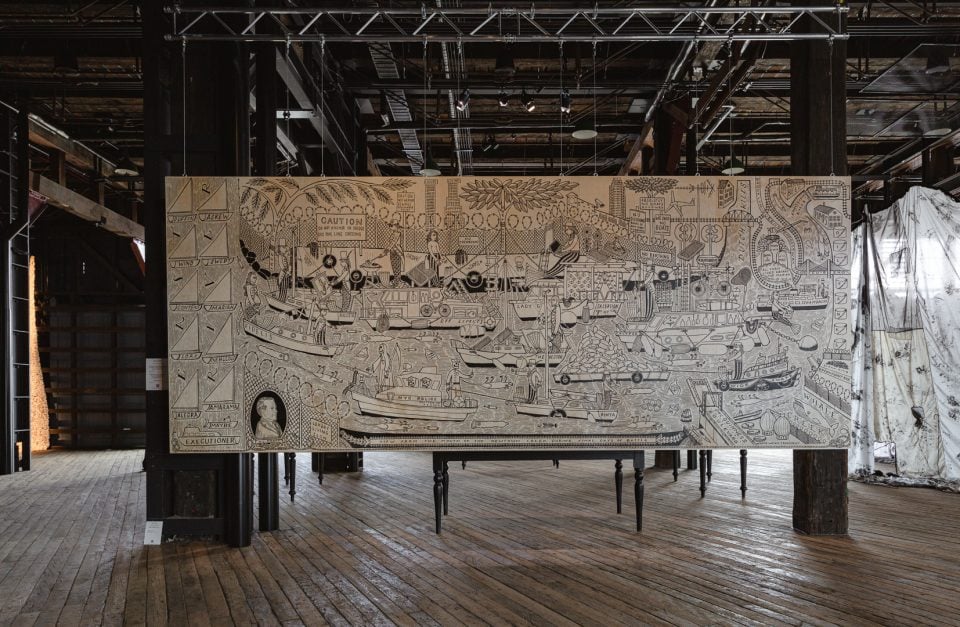The View From The Mouth Of The Newtown Creek During Final Days of Battle, 2022
routed custom plywood
Courtesy the artist
Commissioned by the Biennale of Sydney with generous support from Art Makers
Monument to Five Thousand Years of Temptation and Deception (II), 2021
reclaimed ocean plastic, paint, fish hooks
Courtesy the artist
Duke Riley gained wide public exposure in 2007 when the Acorn, a wooden submarine he built based on descriptions of a vessel from the American Revolutionary war, was seized by the U.S. coast guard for coming too close to a moored ship in the Brooklyn harbour. Riley has always been interested in marine and riverine lore as well as stories of stowaways, naval battles, mutinous crews, island dwellers, maps, pirates, scrimshaw objects, messages in bottles, tattoos, and the life of individuals that often live at the verge of legality and the social norm. The View From The Mouth Of The Newtown Creek During Final Days of Battle, 2022 (2022), commissioned for the 23rd Biennale of Sydney, is a large engraving on plywood that features images and stories from the Newtown creek in Brooklyn, one of the most polluted waterways in the United States and home to many people that illegally moor their vessels there. Riley also created “scrimshaw” objects on recovered plastic bottles depicting some of the worst oil spills globally and the people in power responsible for them, and a series of lures crafted from garbage collected from the creek.
“In 2003 I sailed a 26’ dilapidated sloop into the creek and illegally tied it up to an abandoned bulkhead, expecting to get chased off in a matter of days. As days turned into years, other boats began to appear around me and continued to do so long past my departure from the creek in 2013. There are currently more than 30 derelict boats moored in the creek, mostly clustered together, with people living aboard full time. At first glance, the people that remain there are living out a romantic maritime dream. A rent-free life enviable to the rest of us caught up in the demands of living in one of the most expensive cities in the world. In reality, for most this alternate existence is coupled with harsh winters without heat and a lack of plumbing, running water and basic amenities that many of us take for granted. The most notable downside is the continuous and potentially lethal exposure to a highly carcinogenic environment caused by living on top of a federal Superfund site. Most have no financial means to leave and live elsewhere, but are constantly in fear of being told to leave in the middle of the night.”
